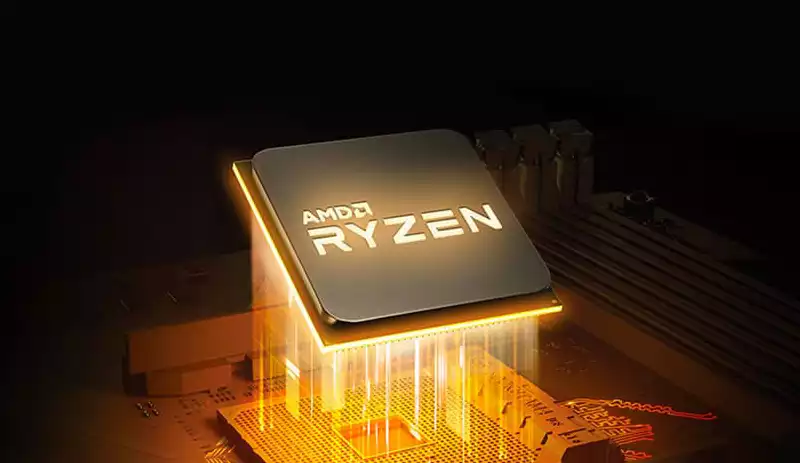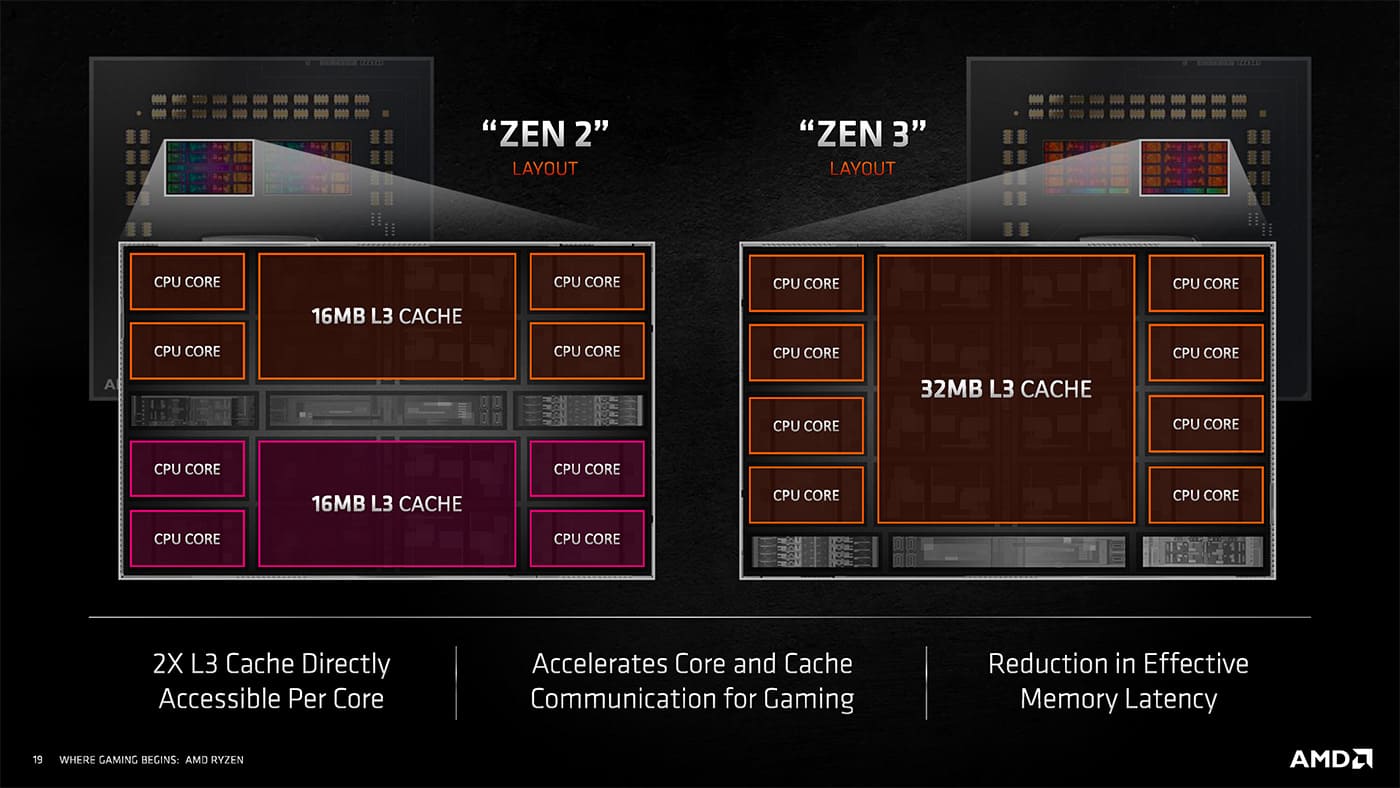You can also be interested in these:
- The Aorus RX 7900 XTX Elite 24G full review
- AMD Radeon R9 M280X GPU review: Powerful and affordable
- What is the AMD FidelityFX Super Resolution?
- AMD Low Framerate Compensation (AMD LFC) explained
The CPU market is defined by the rivalry of two of its most representative established brands: Intel versus AMD. The last time AMD took the leadership of the market, more than 20 years ago, Intel was still working with Pentium 4. In 2011, Intel dominated the microprocessor market by 73 – 80%. In 2017 AMD launched the new generation of its processors, the Ryzen 1000 series, at half the price of Intel with much more processing capacity. Meanwhile this was happening, Intel was traversing a bumpy road developing its technology beyond 14 nanometers. At a glance, these were the facts that gave ADM the edge on the market and thereafter made them hit the spot as the fastest processor in the world in both productivity and gaming.

November 5, 2020 marked an important day for AMD. Moreover, it was the launch of the line of processors AMD Ryzen 5000 based on TSMC and the Zen 3 architecture. This serie introduced 4 new products to AMDs product lineup:
- Ryzen 5 5600X – 6 Cores, 12 Threads. Retail price: $ 299 USD.
- Ryzen 7 5800X – 8 Cores, 16 Threads. Retail price: $ 449 USD.
- Ryzen 9 5900X – 12 Cores, 24 Threads. Retail price: $ 549 USD.
- Ryzen 9 5950X – 16 Cores, 32 Threads. Retail price: $ 799 USD.
The naming conventions of these 4 products coincide with those of the 3000 series. The most noticeable difference was the slight and consistent increase in their prices.
What makes AMD Ryzen 5000 the fastest processor in the world?
The introduction of these new microprocessors was a milestone of innovation. AMD was blessed with the TSMC technology which allowed the product to evolve graciously, compacting from its original 1000 series 14 nanometers to just 7 nanometers.
| Ryzen 5 5600X | Ryzen 7 5800X | Ryzen 9 5900X | Ryzen 9 5950X | |
| Fab | TSMC 7FF | TSMC 7FF | TSMC 7FF | TSMC 7FF |
| Chipset | 1 × CCD 1 × I/O | 1 × CCD 1 × I/O | 2 × CCD 1 × I/O | 2 × CCD 1 × I/O |
| Cores / Threads | 6 / 12 | 8 / 16 | 12 / 24 | 16 / 32 |
| Core Config | 1 x 6 | 1 x 8 | 2 x 6 | 2 x 8 |
| Clock rate (Ghz) – Base | 3.7 | 3.8 | 3.7 | 3.4 |
| Clock rate (Ghz) – Boost | 4.6 | 4.7 | 4.8 | 4.9 |
| Cache – L1 | 32 KiB data 32 KiB inst. (per core) | 32 KiB data 32 KiB inst. (per core) | 32 KiB data 32 KiB inst. (per core) | 32 KiB data 32 KiB inst. (per core) |
| Cache – L2 | 512 KiB (per core) | 512 KiB (per core) | 512 KiB (per core) | 512 KiB (per core) |
| Cache – L3 | 32 MiB | 32 MiB | 32 MiB (per CCD) | 32 MiB (per CCD) |
| Socket | AM4 | AM4 | AM4 | AM4 |
| Memory | DDR4-3200 | DDR4-3200 | DDR4-3200 | DDR4-3200 |
| TDP | 65W | 105W | 105W | 105W |
AMD had three main goals with this new serie: efficiency, latency and performance. The Core Complex (CCX) was rebuilt from the grown up to serve as a good foundation for the technology. Thereafter, AMD improved the previous floating point and integer performance, as well as branch prediction.
The company realized there was a catch in the Zen 2 design which led to latency drop in the communication of the cores outside the arrangement of the 4-core CCX. With the new Zen 3 8-core CCX layout, simply put, there is no latency. Additionally, the previous design had 16MB of L3 cache, although it couldn’t be shared. Having the CCX as an internal island in the chipset made all the cores benefit from the 32MB memory shared space.

The Zen 3 also comes with a solid clock gating system that puts the processor to sleep when not in use. This technology contributes to considerable savings in the energy consumption of the unit, making it reliable and efficient. Additionally, this also benefits the temperature. This unit does not generate heat, a factor that greatly improves its performance.
The AMD Ryzen 5000 series has a PCIe 4.0 connector. Consequently, this makes it compatible with most AM4 motherboards on the market. This is a point in favor of AMD when considering a processor, either for an existing installation, or a new one.
The final blow to cap it all off was its price. AMD decided to launch its products at half the price compared to Intel, a strategy that firmly positioned them at the top of the market. Incredibly, the most powerful version of this series, the Ryzen 5950X, came out at $799 USD and the Intel i9-9660X had a whooping $1600 USD at launch.
How powerful is the new AMD Ryzen 5000 serie?
Compared to the first serie of processors, the Ryzen 1000, this new serie has 80% greater processing capacity. If we compare it with its predecessor, the Ryzen 3000 serie released in 2019, the Ryzen 5000 has a 20% instructions per clock performance boost.
Let’s now compare it with the competition. Even the most conservative model in terms of performance, the Ryzen 5600X outperformed Intel’s most advanced model, the Core i9-10900k in the single-thread performance benchmark. Above everything, it’s almost unbelievable that a processor that worths $299 USD is the fastest processor in the world.
Equally in heavy multi-threaded tasks the AMD Ryzen 5000 series showed a higher performance than its competitors. The Ryzen 9 5600X proved to be 37% faster than Intel processors. Even older generations like the Ryzen 5 3600XT showed a 34% greater difference compared to Intel.
The outcome of this story
History has taught us that the battle of processors is a back and forth of trends and innovations. However, Intel is a company that has both economic resources and engineering assets. They won’t potentially stay silent or idle.
The reality today is that the most viable option to have the fastest processor in the world is the AMD Ryzen 5000 series. It is interesting to see what AMD has been able to build in just 3 years, since the first appearance of Zen technology. This also makes us eager to know what future holds.
More stories like this
- The Aorus RX 7900 XTX Elite 24G full review
- AMD Radeon R9 M280X GPU review: Powerful and affordable
- What is the AMD FidelityFX Super Resolution?
- AMD Low Framerate Compensation (AMD LFC) explained
- Nvidia RTX 3050 vs AMD RX 6500 XT budget GPUs
- AMD FidelityFX Super Resolution 2.2 reinventing the game